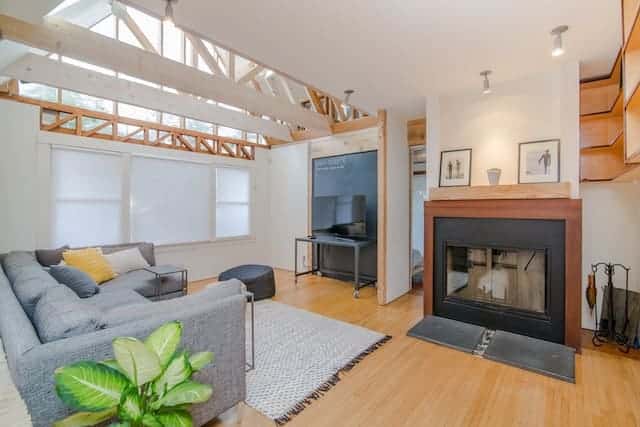What is the difference between renovation, reconstruction and modernization?
Reading time:
In the modern world, the terms “renovation”, “reconstruction” and “modernization” are often used in construction and real estate, but their meaning is not always clear. Understanding the differences between these processes is crucial for proper planning of work and project management.
Renovation in Munich: From cosmetic to comprehensive work

Cosmetic renovation
Cosmetic renovation in Munich usually includes work that does not require extensive intervention in the structure of the building. This can include painting walls, replacing wallpaper, replacing floor coverings such as laminate or carpet. This also includes updating interior elements such as replacing lights, door handles or window frames. These works usually do not require much time and can be carried out without causing major inconvenience to the residents or users of the building.
Comprehensive renovation
The comprehensive renovation in Munich is a more extensive process that can include the replacement of technical systems such as electrical installations, plumbing, heating and ventilation. This can also include strengthening or replacing structural elements of the building, redesigning the room, installing new windows or doors. Major renovations require careful planning, coordination with local building codes and standards, and may require approval from municipal authorities.
Significance of the renovation in Munich
In Munich, where great value is placed on preserving the historic cityscape and the quality of living conditions, renovation plays an important role. Not only does it help keep buildings in good condition, but it also contributes to increasing energy efficiency, improving living comfort and safety for residents and increasing the value of the property.
Renovation in Munich is an important process that requires a professional approach and careful planning. Depending on the goals and tasks, the renovation can be superficial or profound and involve serious changes in the structure and functionality of the object. In any case, a properly increased The renovation carried out significantly improves the quality of living and comfort and increases the value of the property on the market.
Reconstruction in Munich: Comprehensive redesigns and changes
In Munich, the reconstruction of an object involves far-reaching changes that go far beyond a standard renovation. This may be necessary to adapt old buildings to modern standards and needs or to completely change the purpose of the property. The reconstruction includes changing the structure, form and functionality of the building.
Expansion and redesign
One of the most striking aspects of the reconstruction in Munich is the expansion of the object’s surface area. This may include adding new floors, extending existing rooms or constructing extensions to the building. Redesign often includes changing the internal layout of rooms to make them more functional and meet modern requirements.
Change to the structural elements
Reconstruction may involve significant changes to the structural elements of the building, such as strengthening load-bearing walls, replacing or strengthening the foundation and changing the roof system. In Munich, this is particularly relevant for historic buildings, where the external appearance must be preserved, but the interior fittings and technical systems need to be updated.
Complete interior and exterior design change
Reconstruction can mean a complete reconceptualization and change of both the external appearance (exterior) and the internal spaces (interior). In Munich, where the preservation of the historic cityscape is important, changes to the exterior are often regulated by strict standards and require coordination with the municipal authorities.
Reconstruction in Munich is a complex process that requires careful planning, a professional approach and compliance with building regulations and standards. It is a comprehensive transformation that breathes new life into old buildings and allows them to meet modern requirements for comfort, safety and functionality.
Modernization in Munich: Integration of new technologies
In Munich, a city that is actively developing and following modern trends, the modernization of buildings is becoming increasingly important. It is not only about updating old systems, but also about introducing advanced technologies to increase the efficiency, comfort and safety of residential and commercial buildings.
Installation of energy efficient equipment
A key aspect of modernization in Munich is the transition to energy-efficient equipment. This may include installing modern heating systems, such as heat pumps and condensing boilers, as well as using energy-efficient lighting, such as LED bulbs. Such updates help to significantly reduce energy costs and reduce the environmental footprint of the building.
Updating the heating and ventilation systems
In Munich, great importance is placed on creating a comfortable and healthy microclimate in the rooms. Modernizing the heating and ventilation systems not only increases comfort, but also helps to improve the air quality in the building. This includes the installation of ventilation systems with heat recovery, as well as updating or replacing old heating systems with more modern and efficient ones.
Integration of a “Smart Home” system
The integration of a “smart home” system is becoming increasingly popular in Munich. This includes automating the control of lighting, heating, ventilation as well as security systems and video surveillance. Such systems not only simplify property management, but also help to increase the security and efficiency of resource use.
Increase in economic efficiency and safety
The modernization in Munich aims not only to increase living comfort, but also to improve the safety of the buildings. This includes installing modern fire protection systems as well as updating electrical systems to prevent emergency situations. Economic efficiency is also increased by reducing operational costs for building maintenance.
Modernization in Munich is an important step towards creating a more comfortable, safer and more environmentally friendly urban environment.
Comparison of renovation, reconstruction and modernization: Clear demarcation of the work
To better understand the differences between renovation, reconstruction and modernization, it is important to define what specific work and goals are associated with each of these processes.
Renovation
- Aim: To restore or update the existing state of an object.
- Working:
- Cosmetic renovation: painting walls, replacing flooring, minor plumbing repairs.
- Comprehensive renovation: replacement of electrical installations, roof repair, reinforcement of supporting structures.
Reconstruction
- Aim: Change and expansion of the functionality as well as possible change in the shape and structure of the object.
- Working:
- Expansion of the building area (addition of floors, construction of extensions).
- Change to the internal layout and structural elements of the building.
- Complete interior and exterior design update, often incorporating modern standards and technologies.
Modernization
- Goal: updating the object using new technologies and increasing its efficiency.
- Working:
- Introduction of energy efficient equipment and technologies.
- Updating heating, ventilation and lighting systems.
- Integration of “Smart Home” systems, increasing automation and security.
Conclusion
Renovation is primarily aimed at maintaining and restoring the existing condition of an object without making significant changes to its functionality or structure.
Reconstruction implies more profound changes, including structural and functional modifications that can fundamentally alter the object’s appearance and capabilities.
Modernization focuses on updating the object with modern technologies, improving its operational characteristics, increasing comfort and economy.
Understanding these differences helps to properly plan property improvement projects and ensures that the work meets regulatory requirements and stakeholder expectations.
